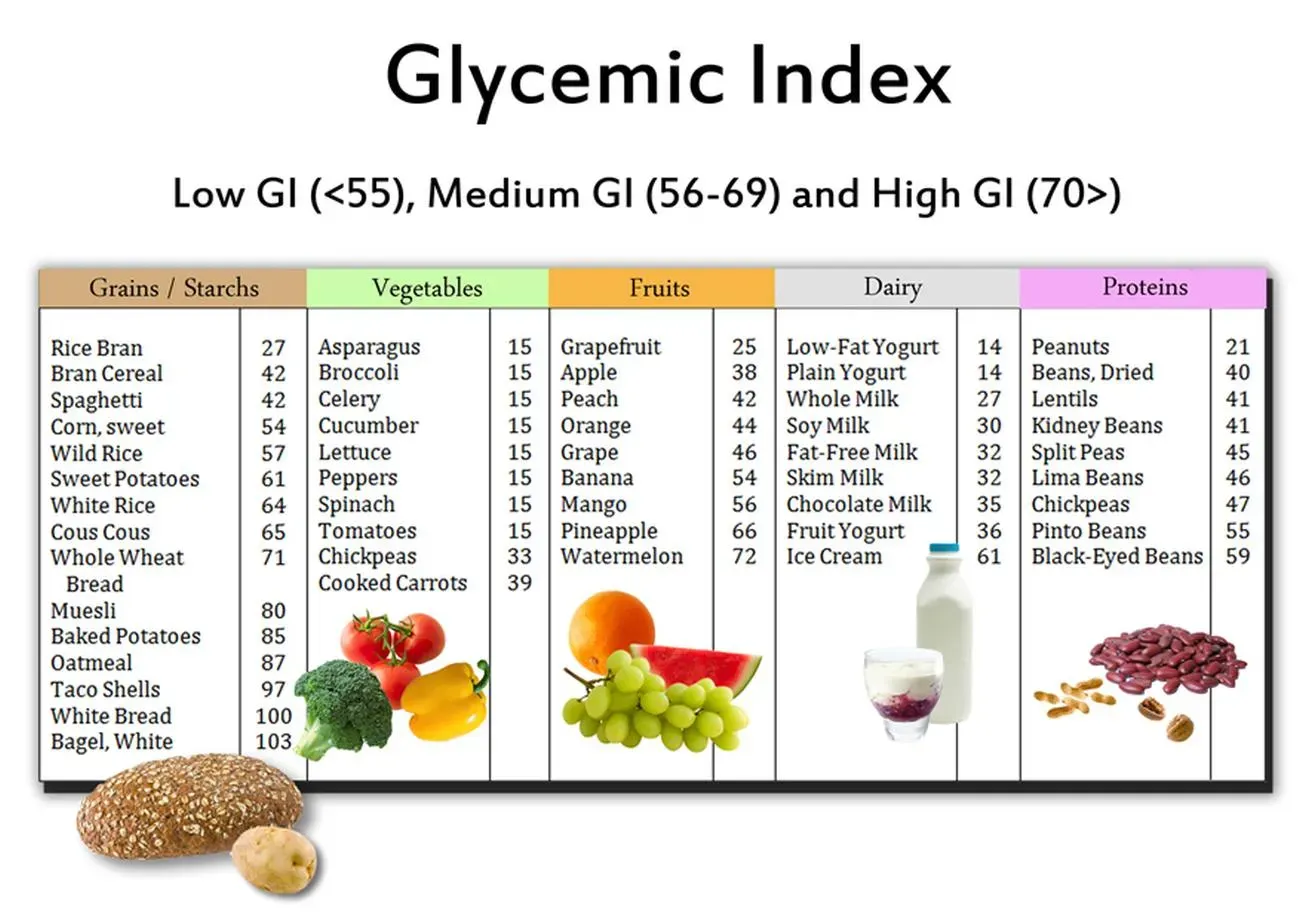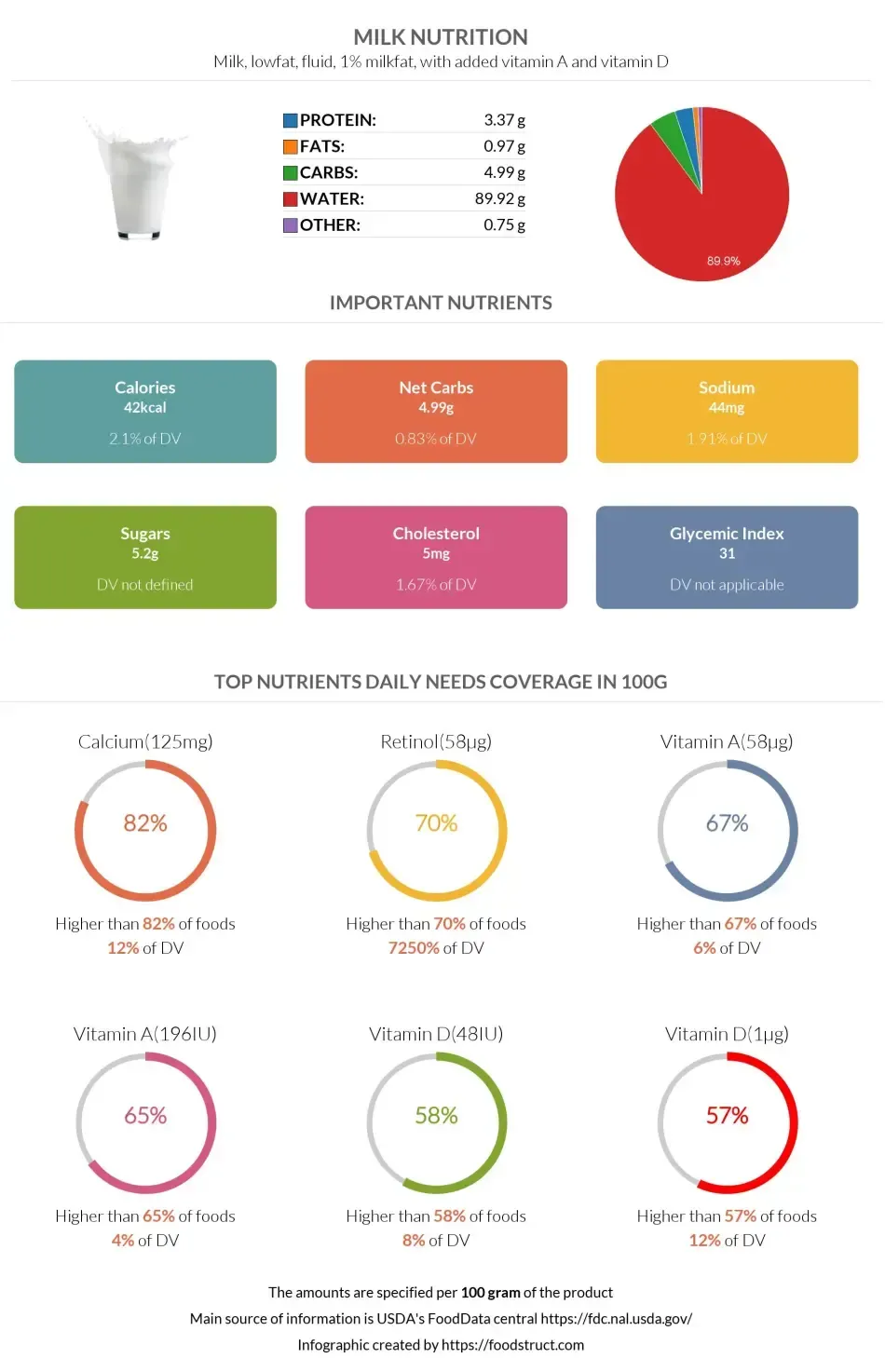Table of Contents
Let's talk about milk. Specifically, the kind that promises less fat but still leaves you wondering what it does to your blood sugar. If you're tracking carbs or managing conditions like diabetes, every sip counts, and the glycemic index (GI) is your ruler here.
Understanding the Glycemic Index (GI)
Understanding the Glycemic Index (GI)
What Exactly is the Glycemic Index?
Alright, let's get straight to it. The Glycemic Index, or GI, isn't some mysterious health guru rating system. Think of it as a speedometer for how fast the carbohydrates in a specific food hit your bloodstream and raise your glucose levels. It's a ranking from 0 to 100, comparing foods to a standard, usually pure glucose or white bread.
A high GI means the carbs break down quickly, causing a rapid spike in blood sugar. A low GI means they break down slowly, leading to a more gradual, sustained rise. This isn't about *how much* carbohydrate is in the food, but *how quickly* that carbohydrate turns into sugar in your system.
Decoding the GI Numbers: Low, Medium, and High
So, what do the numbers actually mean in practice? The GI scale breaks down into three main categories. Foods scoring 55 or lower are considered low GI. These are your slow burners, releasing sugar into the blood at a leisurely pace. Think lentils, most non-starchy vegetables, and some fruits.
Medium GI foods fall between 56 and 69. They cause a moderate rise in blood sugar. This category includes things like whole wheat bread or sweet potatoes. High GI foods clock in at 70 or higher. These are the quick-hitters, leading to a fast, often significant, blood sugar spike. White bread, sugary drinks, and many processed snacks live in this zone.
Here's a quick breakdown of the GI ranges:
- Low GI: 55 or less
- Medium GI: 56 to 69
- High GI: 70 or more
Factors That Mess With a Food's GI
Now, here's where it gets interesting. A food's GI isn't set in stone; several things can nudge it up or down. Fiber content is a big one – more fiber generally means lower GI because it slows digestion. Fat and protein also tend to lower a food's GI by slowing down how quickly carbs are absorbed.
How a food is processed makes a huge difference too. Juicing a fruit removes fiber, spiking its GI compared to eating the whole fruit. Cooking time matters; overcooked pasta has a higher GI than al dente pasta. Even the ripeness of a fruit can change its score. It’s a bit of a complex dance between the food's composition and how you prepare it.
The Glycemic Index of Low Fat Milk: The Hard Facts
The Glycemic Index of Low Fat Milk: The Hard Facts
What the Numbers Say About Low Fat Milk
Alright, let's cut to the chase regarding the glycemic index of low fat milk. You're probably wondering where it lands on that 0-100 scale. Generally speaking, low fat cow's milk falls into the low to medium GI category. Why? Because it contains lactose, which is a sugar, but it also has protein and some residual fat (even in low-fat versions) that help slow down digestion compared to pure sugar.
You won't see it spiking blood sugar as dramatically as, say, a soda. It's not a zero-impact beverage, mind you, but it's far from the glycemic nightmare some might imagine. The typical range you'll find cited is somewhere between 30 and 45. That puts it squarely in the low or borderline medium GI zone.
Factors Influencing Low Fat Milk's GI Score
Now, even within "low fat milk," there can be slight variations in the glycemic index. What causes this? Well, the exact processing method can play a minor role. Homogenization and pasteurization don't drastically alter the GI, but subtle differences in how the milk is treated can have tiny effects. More importantly, watch out for added sugars. Flavored low fat milk, like chocolate or strawberry, will have a significantly higher GI because you're dumping extra simple sugars into the mix.
Even the source can matter slightly – organic milk might have a fractionally different fatty acid profile, though its impact on GI is generally considered minimal. The key takeaway? Plain, unflavored low fat milk has a predictable, relatively low GI, but adding sweeteners changes the game entirely.
Here’s a quick look at typical GI ranges:
- Plain Low Fat Milk: GI 30-45
- Plain Whole Milk: GI 27-38 (often slightly lower due to higher fat)
- Skim Milk: GI 32-43 (similar to low fat, slightly higher due to less fat)
- Chocolate Milk (Low Fat with added sugar): GI 60-75+ (depends heavily on sugar amount)
Low Fat Milk vs. Other Dairy: GI Scores Compared
Low Fat Milk vs. Other Dairy: GI Scores Compared
How Low Fat Milk Stacks Up Against Whole and Skim
so you know where low fat milk generally sits – low to medium on the GI scale. But how does it compare to its siblings in the dairy aisle? Whole milk, with its higher fat content, often has a slightly lower GI. Remember how fat slows digestion? That’s the key here. More fat means a slower release of sugars (lactose) into your bloodstream. It's not a massive difference, but typically whole milk's GI is cited a few points lower than low fat or skim.
Skim milk, having even less fat than low fat, might logically seem like it would have a higher GI because there's less fat to slow things down. And often, that's true, but the difference is usually minimal compared to low-fat versions. We're talking single digits here. The primary carb source (lactose) is still the same across all types of plain cow's milk. So, while there are nuances, the GI scores for plain whole, low fat, and skim milk tend to cluster together in that low to medium range.
Yogurt and Cheese: The Low-GI Dairy Stars
Now, let's look at some other popular dairy items. Yogurt is where things get interesting. Plain yogurt, especially Greek yogurt, tends to have a lower GI than milk. Why? The fermentation process. Bacteria consume some of the lactose during fermentation, reducing the total sugar content and often increasing protein, especially in Greek yogurt. This results in a slower, more controlled blood sugar response. Just be wary of flavored yogurts; they're often loaded with added sugar, which will send the GI soaring.
Cheese? This is the rockstar of the low-GI dairy world. Most cheeses have a GI score that's incredibly low, often in the teens or even single digits. Cheese is high in fat and protein and very low in carbohydrates (lactose is mostly removed or converted during cheesemaking). This composition means it has almost no immediate impact on blood sugar levels. If you're prioritizing low GI, cheese is your friend.
Dairy Product (Plain) | Typical GI Range | GI Category |
|---|---|---|
Whole Milk | 27-38 | Low |
Low Fat Milk | 30-45 | Low to Medium |
Skim Milk | 32-43 | Low to Medium |
Plain Yogurt (Regular) | 30-45 | Low to Medium |
Plain Greek Yogurt | 10-20 | Low |
Most Cheeses | < 20 | Low |
The Wildcards: Sweetened and Frozen Dairy
Alright, we've covered the basics, but what about the fun stuff? Ice cream, flavored milks, frozen yogurt (the kind loaded with toppings)? These are the dairy wildcards, and generally speaking, their GI scores are significantly higher than plain milk or cheese. The culprit? Massive amounts of added sugar. A scoop of premium ice cream might taste great, but the sugar hit is real and comes fast, pushing its GI well into the medium or high range depending on the specific product and sugar content.
Flavored low fat milk, as mentioned before, adds simple sugars on top of the natural lactose, bumping up the GI. Even seemingly healthy options like fruit-on-the-bottom yogurt can be sugar bombs. When you add substantial sugar to any food, you're essentially adding a quick-acting carbohydrate that bypasses the slower digestion provided by fat or protein. So, while low fat milk itself is relatively low GI, anything sweetened changes the equation dramatically.
Using the Glycemic Index of Low Fat Milk for Blood Sugar Management
Using the Glycemic Index of Low Fat Milk for Blood Sugar Management
Making Smart Choices with Low Fat Milk and GI
So, you've got the numbers on the glycemic index of low fat milk. It's in that low to medium range, not a blood sugar bomb, but not entirely inert either. What do you do with this info? It means you can generally include plain low fat milk in a blood sugar-conscious diet, but context matters. Don't just chug a gallon and assume you're fine. Consider what you're eating it with. Pairing low fat milk with foods high in fiber, protein, or healthy fats can help further blunt any potential blood sugar rise. Think having it with a handful of nuts or adding it to a smoothie with spinach and protein powder, rather than downing it alongside a sugary pastry. It's about integration, not isolation.
Making Sense of Milk and Your Blood Sugar
So, we've pulled back the curtain on the glycemic index of low fat milk. It's not a zero-sum game; milk contains carbs that will affect your blood sugar, and the GI gives you a measure of how quickly that happens. Knowing the specific numbers for low fat milk and how it stacks up against other dairy options is just another tool in your kit for managing glucose levels effectively. Use this information, alongside portion control and considering the meal as a whole, to make informed choices about when and how you include low fat milk in your diet.
